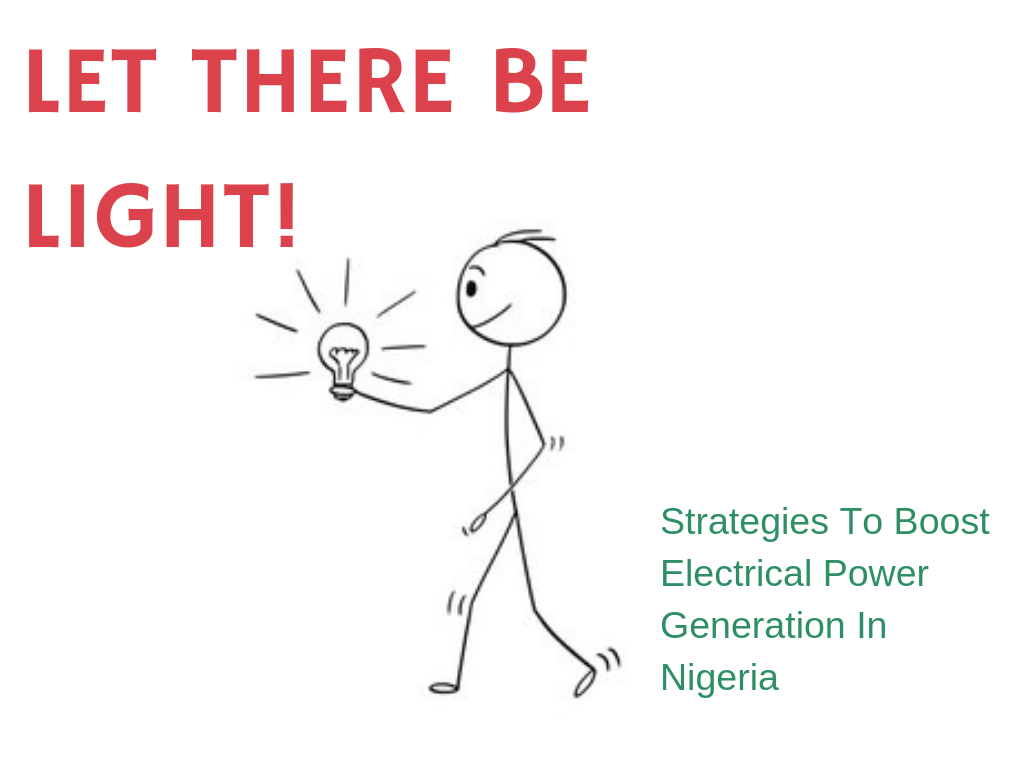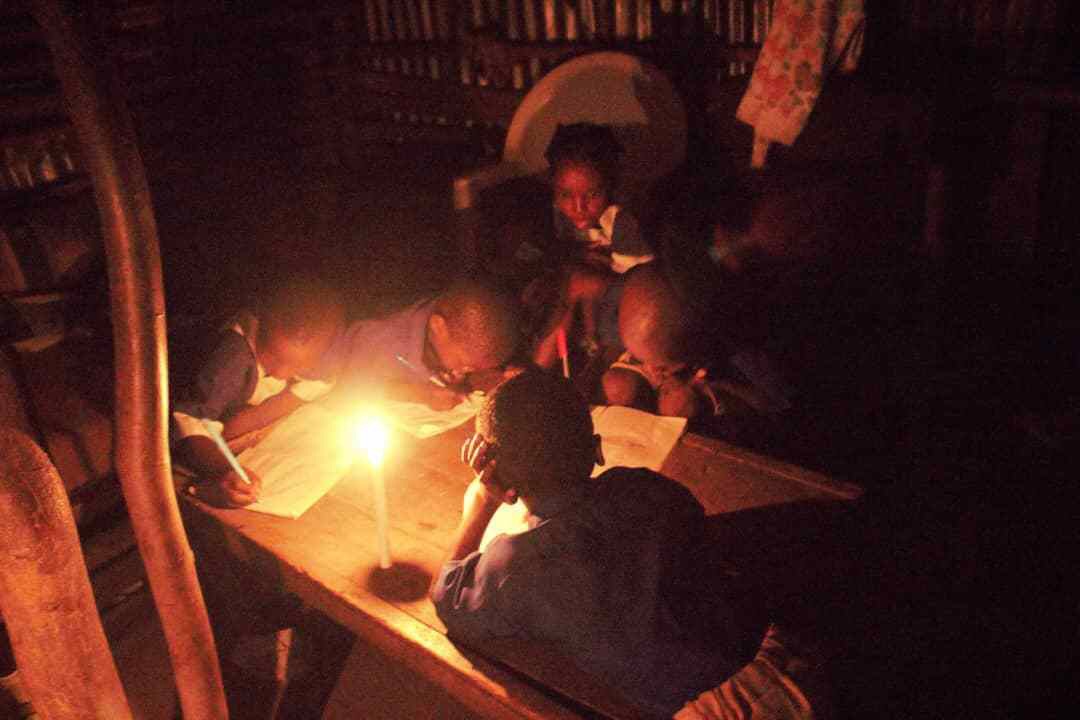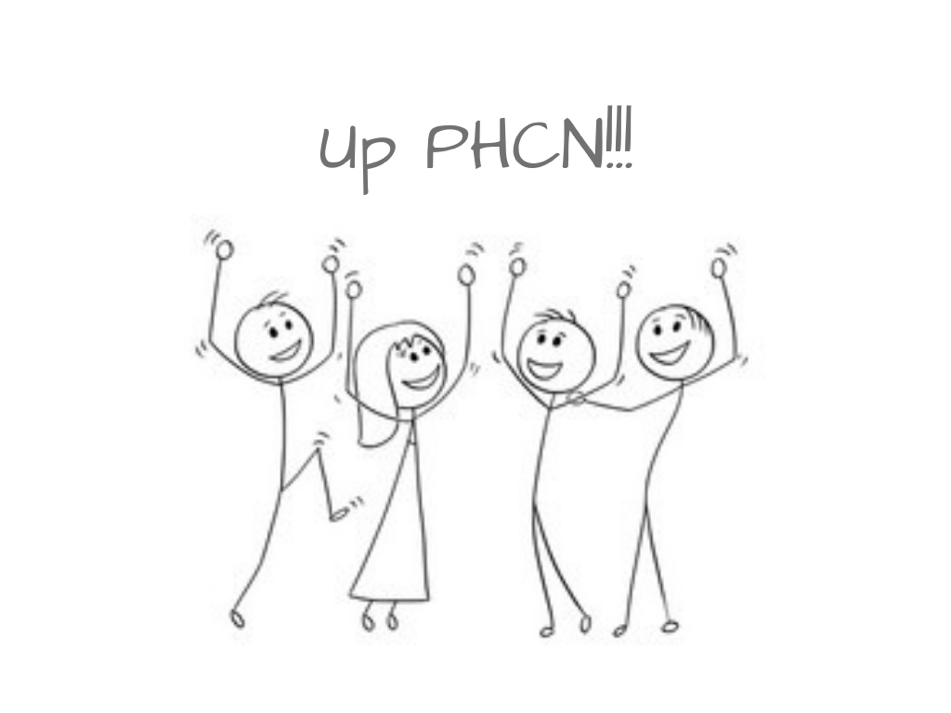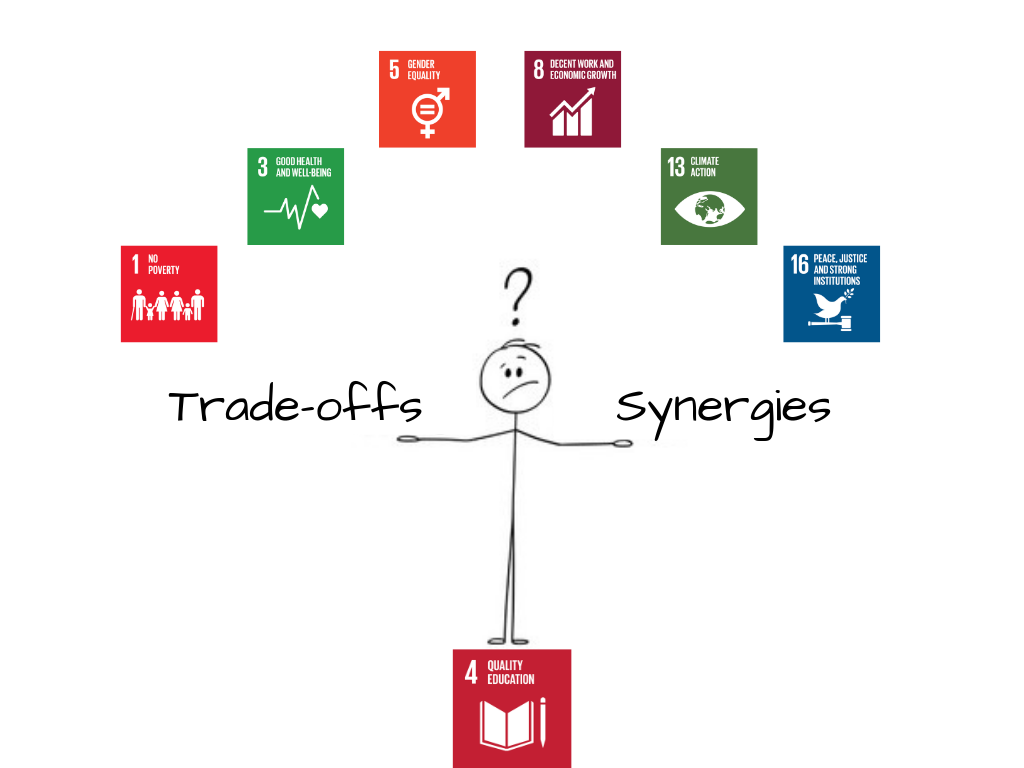 It used to be that in Nigeria, a baby’s first words would almost certainly be ‘mommy’……..or ‘dada’ in the very least. Now, you’re lucky if the first thing your infant ever says isn’t ‘Up NEPA!’. That is how much worse the electrical power situation has become from, say, when baby-boomers were children. Nigerian millennials have been born into a reality where uninterrupted electrical power is the exclusive preserve of the filthy rich – and basically unheard of otherwise.
This sustained electrical power-supply quandary derives from a characteristic lack in both infrastructure management and policy enforcement; both situations inherent to a culture of deficient political will in matters of public welfare – in a county that has struggled unsuccessfully for decades to find a balance in governance. The Nigerian government held absolute monopoly of power generation, transmission and distribution from the very start, you see. The numbers have been abysmal – even though Nigeria has utilized electricity for over a century, in the nineties about half of a population of well over a hundred million had no access to it. In the noughties (in 2009), the country was rated by the World Bank as operating the most inefficient electrification system globally. In spite of its vast superiority in human population figures to a host of other African countries, Nigeria generates far less electrical power than they do; and has consistently fallen well short of accommodating the demands of a rapidly and continually expanding population.
It used to be that in Nigeria, a baby’s first words would almost certainly be ‘mommy’……..or ‘dada’ in the very least. Now, you’re lucky if the first thing your infant ever says isn’t ‘Up NEPA!’. That is how much worse the electrical power situation has become from, say, when baby-boomers were children. Nigerian millennials have been born into a reality where uninterrupted electrical power is the exclusive preserve of the filthy rich – and basically unheard of otherwise.
This sustained electrical power-supply quandary derives from a characteristic lack in both infrastructure management and policy enforcement; both situations inherent to a culture of deficient political will in matters of public welfare – in a county that has struggled unsuccessfully for decades to find a balance in governance. The Nigerian government held absolute monopoly of power generation, transmission and distribution from the very start, you see. The numbers have been abysmal – even though Nigeria has utilized electricity for over a century, in the nineties about half of a population of well over a hundred million had no access to it. In the noughties (in 2009), the country was rated by the World Bank as operating the most inefficient electrification system globally. In spite of its vast superiority in human population figures to a host of other African countries, Nigeria generates far less electrical power than they do; and has consistently fallen well short of accommodating the demands of a rapidly and continually expanding population.
 A SADLY COMMON SCENE IN NIGERIA – CHILDREN DOING HOMEWORK BY CANDLELIGHT
IN LAGOS (IMAGE FROM newdiplomatng.com)
Furthermore, the local power industry has traditionally bled huge commercial and collection losses – in 2009 for instance it was estimated that only about 50% of power used was paid for by consumers.
A SADLY COMMON SCENE IN NIGERIA – CHILDREN DOING HOMEWORK BY CANDLELIGHT
IN LAGOS (IMAGE FROM newdiplomatng.com)
Furthermore, the local power industry has traditionally bled huge commercial and collection losses – in 2009 for instance it was estimated that only about 50% of power used was paid for by consumers.
 With democracy emerging after numerous years of high-handed military rule, the notion was engaged to open up the electricity generation, transmission and distribution processes to private-sector participation; to chase down much needed improvements in those areas. The Electrical Power Sector Reform Act (EPSRA) was passed in 2005 to this end, and eventually by the end of 2014 the government had succeeded in completely transferring electrical power generation and distribution to the private sector; while it retained ownership of transmission – which it manages through the Canadian company Manitoba Hydro International. This was at a time Nigeria was yet grossly underperforming in the sector – delivering a remarkably low 143.7kWh (estimated) of electricity per capita, compared to the Sub-Saharan Africa average of 496.8kWh per capita.
Precious little has changed since. Despite interventions extended by the Federal Government to generation and distribution companies – as well as varied interventions and input from other sources – power access hovers around a meager 40% at present. Generation and distribution operators have characteristically had to navigate a myriad of dire challenges to match delivery expectations. In 2016 for instance, only 25.2% of generation company invoices were serviced. Financial constraints and losses, dearth of functional operational hardware, mismanagement, and bureaucratic bottlenecks all align into a perfect storm of hinderance to efficient electrical power delivery in today’s Nigeria; stunting economic development on a whole – manufacturers for instance necessarily generate large amounts of electricity independently, at steep costs.
Amidst all these one is wont to ask, are there possibly workable, sustainable and immediate solutions to the situation? Well……in point of fact, there are. We at The Centre for the Studies of African Economies (CSEA) have methodically identified and assembled the definitive list of strategies to quickly and effectively solve the power problem; and here they are:
With democracy emerging after numerous years of high-handed military rule, the notion was engaged to open up the electricity generation, transmission and distribution processes to private-sector participation; to chase down much needed improvements in those areas. The Electrical Power Sector Reform Act (EPSRA) was passed in 2005 to this end, and eventually by the end of 2014 the government had succeeded in completely transferring electrical power generation and distribution to the private sector; while it retained ownership of transmission – which it manages through the Canadian company Manitoba Hydro International. This was at a time Nigeria was yet grossly underperforming in the sector – delivering a remarkably low 143.7kWh (estimated) of electricity per capita, compared to the Sub-Saharan Africa average of 496.8kWh per capita.
Precious little has changed since. Despite interventions extended by the Federal Government to generation and distribution companies – as well as varied interventions and input from other sources – power access hovers around a meager 40% at present. Generation and distribution operators have characteristically had to navigate a myriad of dire challenges to match delivery expectations. In 2016 for instance, only 25.2% of generation company invoices were serviced. Financial constraints and losses, dearth of functional operational hardware, mismanagement, and bureaucratic bottlenecks all align into a perfect storm of hinderance to efficient electrical power delivery in today’s Nigeria; stunting economic development on a whole – manufacturers for instance necessarily generate large amounts of electricity independently, at steep costs.
Amidst all these one is wont to ask, are there possibly workable, sustainable and immediate solutions to the situation? Well……in point of fact, there are. We at The Centre for the Studies of African Economies (CSEA) have methodically identified and assembled the definitive list of strategies to quickly and effectively solve the power problem; and here they are:
 PRICING AND ALLOCATION REFORM FOR NATURAL GAS
Seeing as about 80% percent of electricity generation is from natural gas, it follows then that revising regulatory frameworks regarding gas transmission and distribution operations, as well pricing; in what manner to optimally streamline those processes is imperative.
REGULATING THE MARKET
Challenges encountered beyond the privatization of the electricity sector provide ample insight for fashioning built-to-fit regulation of current market operations; channeling effort for maximum yield.
RESTRUCTURING PRICING AND TARIFF
The unsustainable low-pricing model for electricity retail, at the expense of profit, diminishes the investment-appeal of industry operators; stumping the market consequently. An appropriate pricing structure would realistically factor running costs, and thus render generation and distribution companies more viable.
MINI-GRIDS
Off-grid and mini-grid initiatives and regulations are timely and essential – to attract investors discouraged by stringent participation-stipulations around the national grid; as well as to service remote locations inaccessible to it.
ALLAYING CONCERNS REGARDING PAYMENT RISK
Government institutions within the sector will have to project greater reliability by differentiating between legitimate potential-investor demands and unwarranted requests for government guarantees and undertakings; as well as assure equitable risk-sharing across the entire value chain.
COMPLETE TRANSPARENCY IN PROJECT DEVELOPMENT, PROCUREMENT AND CONTRACTING
Public-funding will be offered more readily when transactions are conducted with the utmost transparency and integrity.
FINANCING
Facilities sourced from local institutions are unfeasibly expensive, when available. Necessary intervention to improving access to finance will boost investment. Alternative investment avenues, such as pension funds, also fit nicely into the longevity of amortization of investment characteristic of the electrical power sector.
CONSUMER CONSCIENTIOUSNESS
Consumer best practices such as energy conservation and timely payment of charges, as well as ceasing power theft and infrastructure vandalism all translate to more available electricity overall.
In the end, the phrase ‘Up PHCN!’ (regardless of the popularity still of the old one, the moniker is indeed different now) should hold new meaning – it should become an expression of appreciation for consistency, rather than of thankfulness for brief respite after prolonged darkness.
…..And there was light!
GO FURTHER……read the full CSEA paper – ELECTRIFICATION IN NIGERA: CHALLENGES AND WAY FORWARD
PRICING AND ALLOCATION REFORM FOR NATURAL GAS
Seeing as about 80% percent of electricity generation is from natural gas, it follows then that revising regulatory frameworks regarding gas transmission and distribution operations, as well pricing; in what manner to optimally streamline those processes is imperative.
REGULATING THE MARKET
Challenges encountered beyond the privatization of the electricity sector provide ample insight for fashioning built-to-fit regulation of current market operations; channeling effort for maximum yield.
RESTRUCTURING PRICING AND TARIFF
The unsustainable low-pricing model for electricity retail, at the expense of profit, diminishes the investment-appeal of industry operators; stumping the market consequently. An appropriate pricing structure would realistically factor running costs, and thus render generation and distribution companies more viable.
MINI-GRIDS
Off-grid and mini-grid initiatives and regulations are timely and essential – to attract investors discouraged by stringent participation-stipulations around the national grid; as well as to service remote locations inaccessible to it.
ALLAYING CONCERNS REGARDING PAYMENT RISK
Government institutions within the sector will have to project greater reliability by differentiating between legitimate potential-investor demands and unwarranted requests for government guarantees and undertakings; as well as assure equitable risk-sharing across the entire value chain.
COMPLETE TRANSPARENCY IN PROJECT DEVELOPMENT, PROCUREMENT AND CONTRACTING
Public-funding will be offered more readily when transactions are conducted with the utmost transparency and integrity.
FINANCING
Facilities sourced from local institutions are unfeasibly expensive, when available. Necessary intervention to improving access to finance will boost investment. Alternative investment avenues, such as pension funds, also fit nicely into the longevity of amortization of investment characteristic of the electrical power sector.
CONSUMER CONSCIENTIOUSNESS
Consumer best practices such as energy conservation and timely payment of charges, as well as ceasing power theft and infrastructure vandalism all translate to more available electricity overall.
In the end, the phrase ‘Up PHCN!’ (regardless of the popularity still of the old one, the moniker is indeed different now) should hold new meaning – it should become an expression of appreciation for consistency, rather than of thankfulness for brief respite after prolonged darkness.
…..And there was light!
GO FURTHER……read the full CSEA paper – ELECTRIFICATION IN NIGERA: CHALLENGES AND WAY FORWARD


 English
English
 Arab
Arab
 Deutsch
Deutsch
 Português
Português
 China
China








